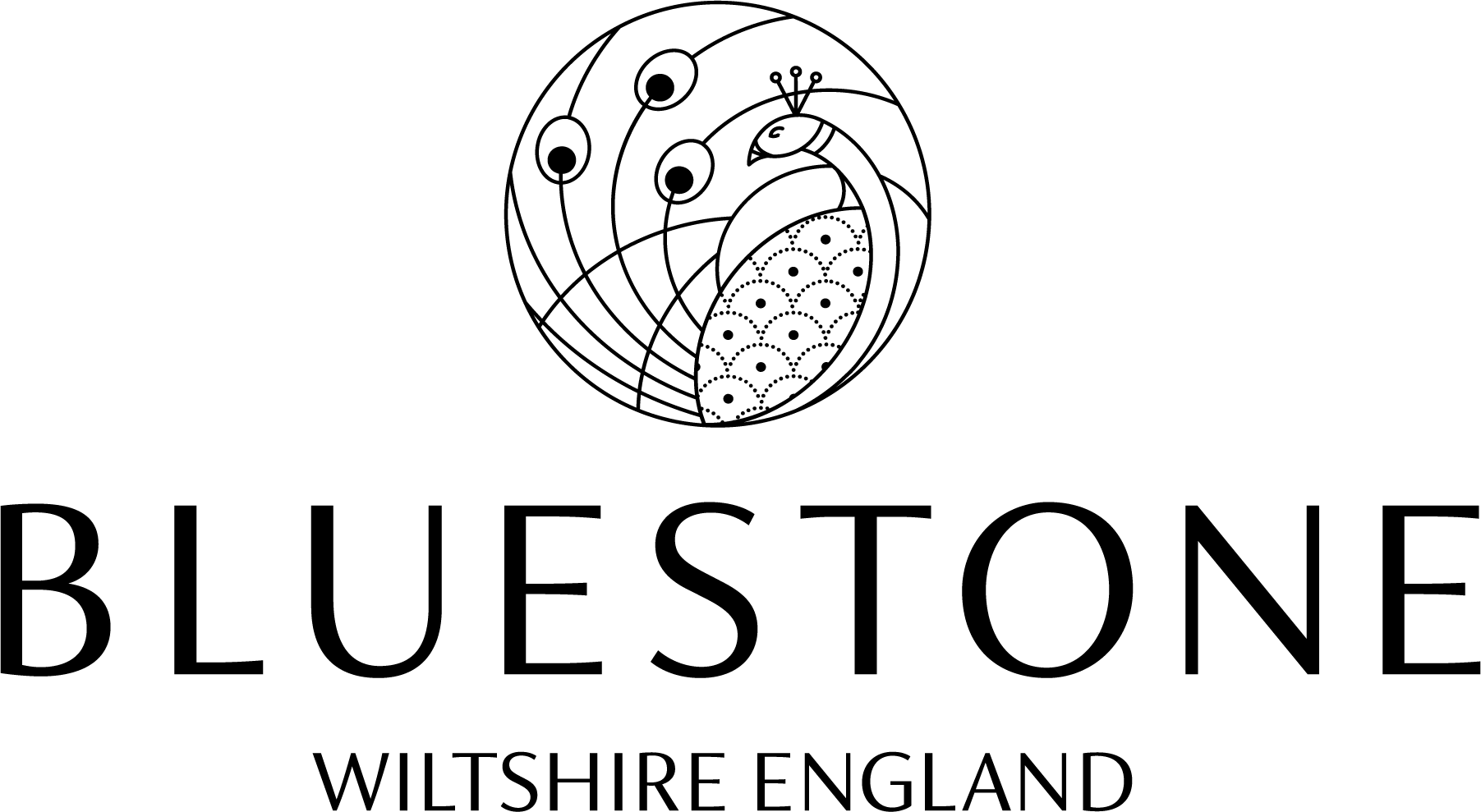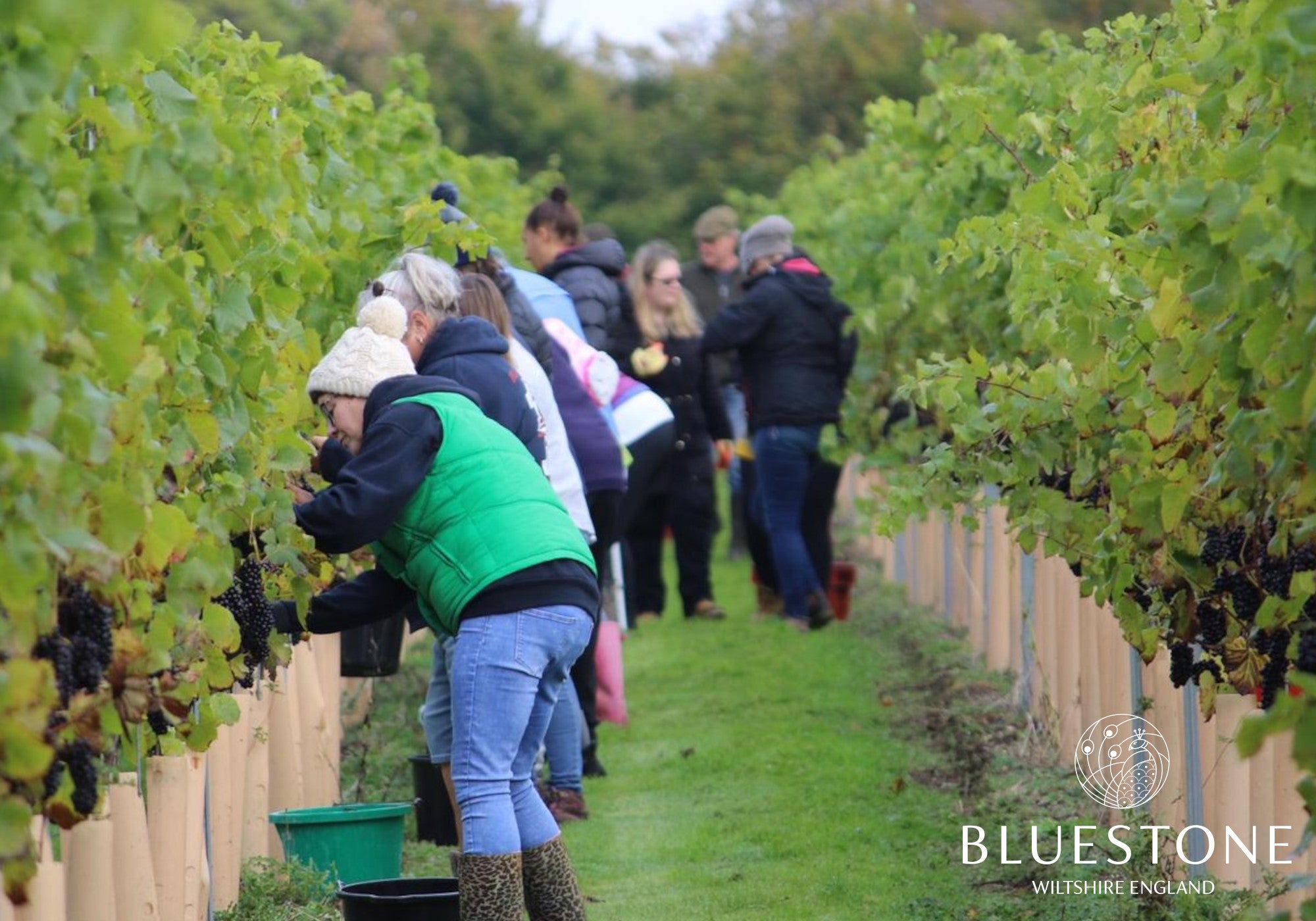Article: 2023 Vintage Report at Bluestone Vineyards

2023 Vintage Report at Bluestone Vineyards
No matter how close we think we are to the land, or connected with the natural world we can never truly anticipate what weather events we might experience. However difficult it is to predict what weather we may receive in any given year there are new trends being set and records being broken. Over time these trends demonstrate that our climate is warming, which seems to be the big headline that we continue to hear about in the news.
In general, as shown by data put together by Nigel Marriott at Marriott-stats.com, we can draw the following inferences
We are experiencing the following trends based by season;
Winter - warmer, brighter and wetter
![]()
Spring - warmer, brighter and normal rainfall
![]()
Summer - warmer and wetter
![]()
Autumn - warmer, brighter and normal rainfall
The data here is based on UK averages, and while this is not specific to our microclimate at Bluestone, we are all seeing these trends play out. Microclimates can shelter a region, area or even a specific site to varying degrees and outcomes from wider weather patterns, which is why you’ll find places that are drier, wetter and warmer for example. These areas fall on the upper and lower quartiles of data, or the extremes of data, and this is where one might find the best sites for vineyards.
We had a few record breakers in 2023 with June becoming the hottest June ever recorded, since records began, and September 2023 becoming the joint warmest September to ever be recorded along with September 2006.
Everyone will forever remember the rubbish summer in 2023 culminating in wet and grey July and August. July certainly saw above average rainfall, rainy days and rain intensity and fewer sunshine hours, while August tracked the average in terms of rainfall, temperature and sunshine hours.
THE HIGHS AND LOWS OF VINTAGE 2023

THE SPRING
2023 for grapes has been widely reported as a bumper harvest, which is true. The fruit potential was there from the start of the season after escaping the dreaded Spring frosts.
Early Spring had low rainfall and high temperatures compared to the long term average. I think this will have contributed to warming soils and starting to bring life back into the vines after going dormant for the winter. March had above average rainfall and although the average temperatures tracked the long term average, the rain may have contributed to keeping the soil temperatures lower and slowed the vines coming out of dormancy.
April showed slightly above average temperatures and daylight hours, which will have helped buds emerge. Budburst was recorded on and around the 21st April, which is by no means early. Frost days were low as average temperatures remained high.
We had one occasion at Bluestone where the temperature was in danger of dropping below 0℃, which didn’t materialise. At Northcourt, our little one acre site near Alresford was looking like it could be in more danger. Northcourt is a lower lying site and in a valley that has a habit of catching and holding cold air. Toby was out fighting frost on one occasion at Northcourt and we didn’t have to light any fires at our home vineyards in Cholderton.
Big tick in the box for escaping Spring frost.
Coming into May we started to see some beautiful weather with temperatures and sunshine hours being above average and rainfall being well below. This warm and dry weather spell allowed perfect conditions for the young shoots to put on some growth and chase down the growth of the warmer and drier Spring of 2022.
This weather trend continued into June with it earning the hottest June on record since records began. The low rainfall from May through to June also meant that disease pressure was low, which is always conducive to minimal intervention practice in the vineyards.
June is key as this is when flowering takes place. Flowering, after Spring frost, can be the most nerve racking time in the vineyard. Ideally, we want settled warm weather, with bright sun and blue skies. This is exactly what we received. This heat and sunshine allowed for a perfect flowering period leading to a very strong fruit set. The flowers swell and turn into tiny perfectly round bb gun pellet sized berries.
Coming out of flowering, we had lots of bunches, thanks to a warm 2022, no frost, and now we had lots of berries on those abundant bunches.

THE SUMMER
As alluded to in the overview, summer in 2023 was pretty appalling. I don’t think I need to go into more detail than I already have.
The consequences of a wet, dull and warm summer means high disease pressure as mildews thrive in warm and moist conditions. The lack of sun will have also allowed a better environment for mildews to multiply. The summer was difficult to say the least. Our vineyard hero, Toby, was on top of everything and kept the majority of the mildews at bay. The fruit was as clean as you could get it, however, we did suffer from a downy mildew in the top of the canopy, which was a common theme across vineyards in much of the UK. The downy mildew being present in the top of the canopy is mainly down to our sprayer pressure and not getting a good coverage when spraying. This is something that we can work on going into future years to prevent the same issue from happening again.
Weather conditions like those we experienced in July and August contributed to a slower version. We started to see a colour change in our Pinot Noir on the 5th September, which is on average 7-10 days behind previous years. Although we had heat, we did not have a lot of it. The higher rainfall will have encouraged the vines to grow vegetatively and so putting energy into extending shoot tips and putting out new leaves.
The rain and warmth at this point in the season gets us into a vicious cycle of new growth and disease exposure. New vegetative growth is very vulnerable to mildews as the waxy cuticle, similar to our protective skin barrier, is thin and more prone to being infiltrated by mildew spores. Sprays can prevent this sporulation, however, as there is so much growth in a short space of time you would need to be spraying in shorter intervals, which is sometimes not permitted, depending on what you use and how you use it.
The compounding effects of plant energy distribution weighted more heavily to vegetative growth, high disease pressure at the shoot tips, duller days and higher rainfall, and (!) a higher crop load meant that ripening the entire crop could be tricky.
Big cross in the box for a lovely Summer.

THE AUTUMN
September was the saviour of 2023 in my opinion. The joint warmest September in history, helped by 7 solid days of temperatures between 25℃ - 30℃. The above average temperatures and above average sunshine hours for the whole of September pushed the ripeness levels on in our fruit. Coming to the beginning of October we were wishing for another heatwave, which we didn’t get in one block but we definitely hit over 23/24℃ on a few occasions. In a season like this one, it was essential.
October was warm and wet. Viticulturalists are often biting their nails to the bone at this point. The Autumnal change in weather often brings more rain and on average, colder temperatures. This can present us with disease pressure in the fruit with botrytis continuing to be rife as temperatures are still high enough to allow for their reproductive cycles. This is the risk - reward game now. Can we leave the fruit out for marginal gains in ripeness levels? Or do we risk losing clean fruit in pursuit of marginally riper fruit?
Big tick for an Autumn saviour.

THE HARVEST
At Bluestone we rely heavily on volunteer pickers, which for the most part are available on weekends. This means we choose to pick on weekends. The availability of the press became more of a consideration this year whereas in the past there has been availability to meet our needs. We were a little more constrained with when we could bring fruit to the winery and as such meant that we had a smaller picking window. We were left with a large gap between two pressing windows 7th - 11th October and 21st October onwards. A little bit of a dilemma as we either bring fruit in perhaps a little before its time, or we leave it out and bring it in later and risk more disease.
We decided to hedge our bets.
Pinot Noir and Pinot Meunier tends to always come into the winery first. I should mention that the red fruit was superb. Clean and ripe. An interesting observation this year, which I think was fairly consistent across the country across many different varieties was that despite sugars remaining relatively low, acids being in the perfect range, if not in danger of dropping too low, and the flavour development was good. Sugars and acids do not always correlate to flavour, which was something to me that was painstakingly obvious this year. In other years, I think the sugar masks the more subtle flavours when tasting at the grape stage.
The Pinot Noir and Meunier was picked on the 7th and 8th of October, 23 tonnes of it, the equivalent to 14.28 tonnes per hectare.
The Chardonnay was picked on Tuesday 10th October, Sunday 23rd October and Saturday 28th October.
By picking on either side of the pressing gap it allowed us to bring in some Chardonnay that was “in the bank” so to speak. This fruit again, was gorgeous and clean but perhaps a little higher in acidity than we would have liked. Our risky move paid off as the fruit that was picked later in the month was perfect. The sugar had climbed a little, which was less of a concern this year, but the acidity had fallen into a sweet spot for 2023 and the flavour developed that much more coming away from a greener flavour profile.
As a result, we now have 34.25 tonnes of beautiful chardonnay safely at the winery going through fermentation. 34.25 tonnes is equivalent to 15.22 tonnes per hectare.
THE WINES
At this stage it is too early to tell. Over the course of the development of our base wine we will be keeping an eye on them and nurturing them on their journey. As tricky as 2023 was, I believe that there are bags of potential for this vintage; and as with our wines it will be interesting to share the story of the vintage that, by the time we release the wines, will be all but forgotten about.
The abundance and quality of this “bumper” harvest will allow us to make some new and exciting releases that we can only usually make when the quality is just right, but also in the quantities that allow us to be playful.
I look forward to sharing the journey of our 2023 vintage wines with you over the next 12 months from tank and barrel to cellar.

